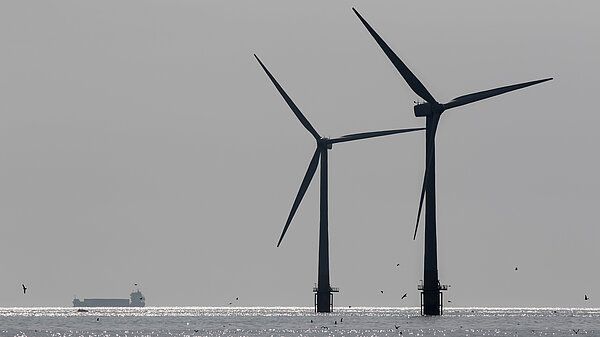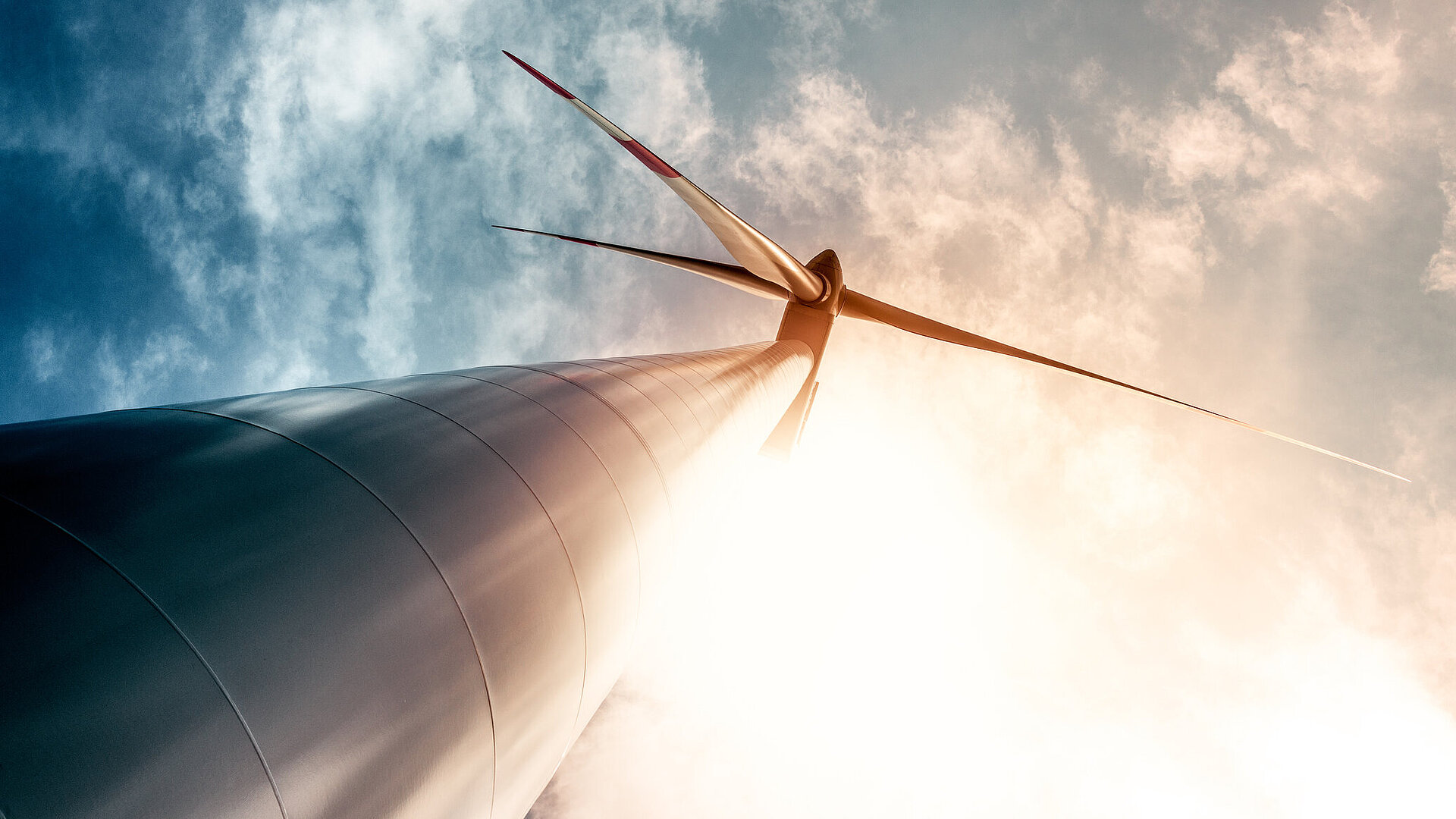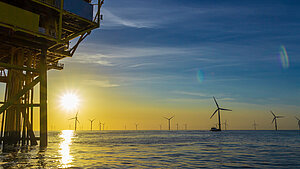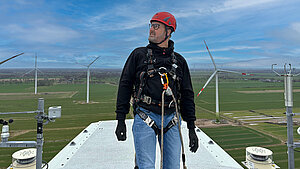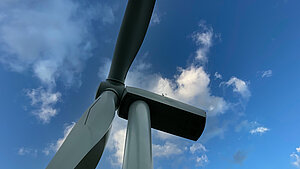Safety on wind farms is of great importance. Just because of their impressive height, they are one of the workplaces with significantly increased risk potential for service technicians and other employees. In order that accidents causing serious injuries or even death are avoided as far as possible, appropriate safety measures are legally mandated. In addition to a professional, certified fall protection system, in-depth training is amongst the major elements of a comprehensive safety concept. Rescue training is an extremely important component of this. RelyOn Nutec is a company which, combining its safety and expertise services with more than 50 years experience worldwide, has established itself as one of the leading experts and as a partner for safety-critical industries such as wind energy. In discussion with INNOTECH, Birk Schütte, Management Consultant for Industrial Safety at RelyOn Nutec Germany GmbH, explains what matters in terms of rescue training, and how important professional fall protection systems are, even at the level of training.
The role of fall protection for training providers
INNOTECH: Mr Schütte, what role do fall protection systems play for you as a training provider in the area of wind power?
Birk Schütte: Fall protection systems are of fundamental importance for us. In the area of renewable energies, we provide training compliant with the standard of the Global Wind Organisation (GWO). Every person who works on an offshore wind farm must complete at least one training course consisting of six different components; participation in three of these six areas would not even be possible without a fall protection system. In our courses, in addition to contents relating to first aid, fire-fighting, and correct lifting and carrying of loads, the participants principally learn survival at sea, how the transfer works, including transition to the wind turbine, and how to move safely at height. Naturally, the rescue of a person from a ladder is also a component of this training. During the course on working at height, apart from stationary fall protection systems such as a guided type fall arrester on a ladder, work is performed in particular with mobile, temporary fall protection systems (strap fall attenuators). Obviously, the participants are secured at all times with a secondary protection system, i.e. a fall arrest device.
In addition to these fundamental training courses, we qualify wind power technicians in the area of industrial rescue at height. Here the participants learn further rescue procedures from the various areas of a wind turbine, such as the transition piece, the nacelle, the hub, and the blade. The difficulty here is that, in contrast to normal work at height, we cannot permanently install secondary protection systems. Accordingly, the participants are trained how to find natural and artificial anchor points, and to use these to create a temporary, redundant fall protection system.
Challenges from an expert's point of view
INNOTECH: Where do you see the greatest challenges currently when it comes to fall protection on wind turbines?
Birk Schütte: On wind turbines the natural anchor points for attaching temporary fall protection are often few and far between. Wind power technicians are therefore forced to install artificial anchor points at those locations where they have to work. Depending on the part of the wind turbine at which someone is located, this can be a more or less difficult undertaking. In general, life is easier for wind power technicians in an offshore environment than onshore, because at sea the wind turbines can be built to greater dimensions. Especially for older onshore wind turbines it’s even difficult in the first place to get to the place on the turbine where you need to be. These turbines were also frequently built more with a view to efficiency and saving material, and less from the aspect of working ergonomics.
Burdensome route...
And so, even on modern wind turbines, the route from the base of the turbine up into the nacelle is often still burdensome. Although modern turbines are equipped with a lift, on older turbines the technician must climb upwards via a ladder.
In this case he is either protected by means of a guided type fall arrester, i.e. a lifeline or rail system, or else in the worst case he must repeatedly re-secure himself every few rungs, using a strap fall attenuator. Because wind turbine towers are conical, i.e. their diameter reduces as height increases, the technicians sometimes also have to change ladders and the associated fall protection systems multiple times. There is always a certain risk to this. For this, it would be desirable to have a fall protection system where it is necessary to attach only once without having to detach again before reaching one’s destination.
What really counts
INNOTECH: In your opinion, what is important for a protection system against falling, and why?
Birk Schütte: The most important thing is the system’s user-friendliness. A fall protection system is used and accepted by the worker only if it can be operated intuitively and it works perfectly. Regardless of the industry in which they work, for the users a fall protection system is a further impediment to workers in achieving their objective, i.e. the completion of their job assignment. If the effort of using a fall protection system is greater than the effort of performing the planned task, then the fall protection is willingly omitted. Routine is also a great enemy. The more frequently a system is used, the more careless the user becomes when using it. It must therefore be possible to intuitively attach the system correctly, for example a rail slider, and it must have sufficient safety mechanisms to prevent incorrect attachment. Manufacturers of such fall protection systems must pay full attention to the weakest link in the chain. It is essential that every person, regardless of their experience, is able to operate the fall protection system safely and correctly.
INNOTECH: In your opinion, where is there scope for improvement in terms of fall protection systems, and why?
Birk Schütte: Often fall protection concepts are only partially thought through. The systems are used in order to prevent a fatal accident as a result of a fall from a raised platform. And fall protection systems perform this is in an exemplary manner. But what is often missing is the plan for what happens after the fall. As early as the planning stage of a fall protection system, thought should be given as to how a person can be rescued after an accident. For example, if a person on a ladder falls and is held by the lifeline system, then under some circumstances self-release is no longer possible, and after a short time a potentially fatal suspension trauma may occur. The rescuer must now organise a rescue device, and climb with strap fall attenuators to the victim, because the entire lifeline system has now been subject to fall strain, and is no longer usable.
Depending on the height to be climbed, this is a difficult and exhausting undertaking. It is certainly somewhat simpler with a rail system, because only a single rail section has been subjected to fall strain and is no longer usable. In this case, only the last 6 to 8 metres need to be secured and climbed using a strap fall attenuator. But for the rescue it also depends on the ladder present. For example, if a so-called “chicken ladder” is installed, then the rescuer cannot reasonably secure themselves, because the only attachment point is located in the middle of the ladder, and that is where the victim is already hanging. A rescue now becomes difficult or even impossible. In terms of rescuing someone who has fallen, even ladders with a catch cage at the rear are quite a challenge, because it cannot be ensured that the rescuer is able to access the fallen person via the same route and then take action. In any case, having a modern, professional fall protection system is a step in the right direction, but it is always essential to consider what happens when something happens.
Challenge fall protection
INNOTECH: For you as a training provider, what are the greatest challenges in selecting the optimum fall protection system?
Combination of safety systems - a challenge!
Birk Schütte: The biggest problem is the multiplicity of different systems on the market. Our trainers are often asked how a certain system is to be used, or whether fall protection harness X can be combined with slider system Y.
In our training centre alone we have almost 20 ladders with various slider systems. In addition to this, there are very varied fall arrest devices, rescue and evacuation devices, anchorage equipment, harness systems, and much more. Our trainers have to have an immense fund of knowledge, and are forced to continually extend and refresh this knowledge. But this is also because we have not specialised exclusively in customers from the wind energy sector. We provide general training across many industries. Thus, in addition to wind power installers, industrial climbers, facade cleaners, and aspiring emergency paramedics or maritime pilots find themselves in our climbing harnesses. Our claim is that we provide all workers at height with the best possible training, regardless of the industry that they come from or their level of experience.
INNOTECH: Please describe a typical working day at your company.
Birk Schütte: Our participants are collected at 8.15 in the morning by the trainers. Depending whether it is a foundation course or repeat training, they are taken either to a classroom or directly to the practical area. As a rule, the training day ends for our participants at 16.00. That’s the plan anyway. Because we provide our training 24/7 and location-independent, it often happens that customers with short-term bookings are still training in the evening, or that our trainers are located at a customer site or on a ship, where they conduct the training. Generally, our objective is to provide the maximum flexibility for our customers, without quality suffering. Up to now, we’ve been very successful in this.
INNOTECH: Exactly what takes place during your training of service technicians on wind turbines, and what are the differences between training courses at your centre and those directly at the customer site?
Birk Schütte: Before we can conduct training away from our training centre, a hazard identification and a risk assessment have to be performed. On site at the customer’s we don’t know the last time the relevant ladder or anchor point was inspected, or whether they have suffered damage which could result in a hazard. All these potential dangers must be investigated and excluded, in order that the training can take place safely. Our trainers are specially instructed to do this. After this, together with the customer, we decide the locations of the respective structure at which training takes place. In other ways, the training onsite is more or less the same as the training sessions in our centre.
That is what matters
INNOTECH: In your opinion, for wind turbines what is important for first aid and for the rescue concept, and what are the greatest pitfalls here?
Birk Schütte: Rescue concepts are often written or modified without being tested subsequently. I’ve even read concepts where the victim had to be hoisted into the air in a stretcher, because it was necessary to change the anchor point. But the problem is: If nothing is there, then I can’t hang anything from it. For someone with no idea about rescues or experience of them, that concept sounded wonderful and professional, but in reality no rescue could have been performed if that concept had been implemented. It is therefore of fundamental importance that a written concept is tested after its creation or modification. This is the only way to ensure that it can be implemented, and that in the end a victim can be rescued safely.
INNOTECH: How did you learn about INNOTECH, and what do you think about us in general, and about our safety solutions in particular?
Birk Schütte: We learnt about INNOTECH at a local event in Rostock dealing with the expansion of wind energy in the Baltic Sea. We were then able to further strengthen this contact at WindEnergy 2022 in Hamburg, and so the relationship between our two companies has grown even more, and will hopefully continue to do so. We are very enthusiastic about the solutions which INNOTECH has in its repertoire. Particularly the TAURUS rails, which allow protection around curves, have created great interest for us. We are very excited about systems which we can get to know, try out, test, and further develop together with INNOTECH in the future.
If you would like to know more about fall protection and safety systems for wind turbines, then ideally you should contact us immediately, or else read our guide to fall protection systems on and in wind turbines.











